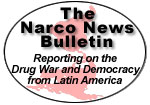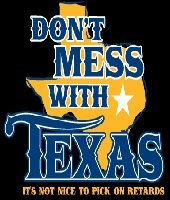
|
Computer-aided Design of Tesla Coils
by Toby Grotz
THEORETICAL ELECTROMAGNETIC STUDIES AND LEARNING ASSOCIATION
522 WEST THIRD STREET
LEADVILLE, CO 80461
(719) 486-0133
COMPUTER AIDED DESIGN OF TESLA COILS
BY TOBY GROTZ
Coil Tuning & CAE Comparisons Of Three Similar Coils
Software for Tesla Coil design has only recently become available.
Computer Aided Engineering using appropriate software not only helps
during the initial design but helps to refine system operating
characteristics. We have used three programs for Tesla Coil design.
One of the first was developed by Kovak1-7 and was written for
Commodore-64, Apple II-e and Sharp computers. The program has
excellent graphics and contains separate sections on design theory and
the mathematics of Tesla Coil design. The program is supplemented with
a video for VHS or BETA which details design examples and use of the
program. (see TCBA NEWS Vol. 4, #1, pg. 3, 1985) One word of caution:
the calculation for the resonant frequency of the secondary may differ
from measured values by a significant amount. This program provides an
excellent introduction into Tesla Coil design and construction for
amateur experimenters and students beginning their study of Tesla Coil
design, but it does not take into account calculations for the extra
coil.
TSCAD by Robert Jamison [1-8] is the most comprehensive and
sophisticated program that we have reviewed to date. The program
features improved scaling for unusual conditions, an expanded entry
range, and comes with a comprehensive manual with multiple hardware
examples. The program, in my opinion, is not for beginners, but for
experienced builders and design engineers. This program is quite
versatile in its ability to allow "what if" inputs. The main screen
which contains the electrical and physical parameters permits easy
entry of new values and allows a designer to quickly change many
parameters leading to a fast and easy design. Help screens and
comments are readily available as well a a built in commentary which
points out design discrepancies and offers suggestions for re-design.
After several sessions of running TSCAD, I remembered the first time I
sat down at a computer to run a Tesla Coil design program. I am
amazed at how far Tesla Coil CAD has come in five years. TSCAD blends
the art of Tesla Coil construction into the science of electrical
design.
TCTUTOR by James F. Corum and Kenneth L. Corum1-9 is a program that
does to Tesla Coil design what the 6502 did for personal computing.
Running on a PC, the program will be appreciated by engineers, hardware
designers, and students of electrical power and RF theory. The program
is attractively and professionally packaged with a three ring binder
that conogram instructions and a comprehensive dissertation,
Tesla Coils - An RF Power Processing Tutorial For Engineers. The
theory of Tesla Coil design begins with elementary principles of
resonance and continues up through graduate level course work. TCTUTOR
is a program that can be used at any level to demonstrate the
principles under study. The program calculates wave forms, spectral
power distribution through the use of a fast fourier transform (FFT),
and performs Smith Chart calculations for the case of the extra coil.
(Technically the Extra Coil is a quarter wave helical resonator and
mathematical analysis is quite complicated) If or when wireless
transmission of power is finally attempted, it is to be expected that
TCTUTOR will play a part in the final design.
Because it is the only program that allows for Extra Coil design and
analysis, we have used TCTUTOR to compare and contrast three of the
largest Tesla Coils built to date. The first, of course was described
by Nikola Tesla in The Colorado Springs notes of 18991-10. The second
and third coils are those built in Colorado and Utah and described
above. Using the measured and assumed values in Table I, print outs
from TCTUTOR show the voltage induced from primary excitation, the
Fourier Spectrum of the induced voltage, and the final output voltage
and extra coil characteristics, for all three cases.
TABLE I
Tesla - 1899 Utah Colorado
| Input Voltage (kv rms) 70 44 45 |
| Capacitance in Primary Circuit (C1 uf) | .127 | .2 | .177 |
| Primary Resistance (R1 ohms) | 8 | * | * |
| Primary Inductance (L1 uh) | 57 | 33 | 33 |
| Secondary Inductance (L2 mH) | 9 | 9 | 9 |
| Secondary Resistance (R2 ohms) | 10 | * | * |
| Secondary Capacitance (C2 pf) | 300 | * | * |
| Secondary Resonant Frequency (kHz) | 97 | 64 | 64 |
| Extra Coil Resonant Frequency | 92 | 94 | 94 |
| Coefficient Of Coupling | .6 | .6 | * |
(*) indicates that the quantity was not measured, the default program
value was used in the analysis. R1 & R2 are AC resistances at the
frequency of operation. Since minimal data was available for the Utah
configuration1-11, an assumption of values was based on the fact that
the Colorado system had been built as close as possible to that used in
Utah, which in turn had been built electrically and physically as close
to the the Colorado Springs design as possible. The coil dimensions
were the same and the length of wire used in the primary, secondary,
and extra coil was the same. As a matter of fact, the same wire used
for the Utah experiments was used for the recent experiments in
Colorado.
Figures 1 - 9 show the computer analysis based on values presented in
Table I. The first four figures show the output of TCTUTOR for the
values Tesla used in 1899. Figures 6 - 9 show the Fourier Spectrum and
the peak voltage induced in the secondary for both the Utah ( Figs 6 &
7) and Colorado (Figs 8 & 9) experiments.
FIGURES - FROM TCTUTOR
Fig. 1. Circuit diagram with values used by Tesla in 1899.
Fig. 2. The equivalent lumped circuit of the secondary. 1899
Fig. 3. Induced Secondary voltage vs. time. 1899
Fig. 4. The Fourier Spectrum if the induced voltage. 1899
Fig. 5. The final output from the extra coil with Smith Chart factors,
calculated voltage step up, and estimated spark length. 1899
Fig. 6. Fourier Spectrum, Utah experiments.
Fig. 7. Induced voltage, Utah experiments.
Fig. 8. Fourier Spectrum, Colorado experiments.
Fig. 9. Induced Voltage, Colorado experiments.
PHOTOGRAPHS
1. QUENCH GAP Barrel covering top half is a safety measure in case of
rupture due to ceramic failure while pressurized. (see text)
2. ROTARY BREAK turns at 7110 rpm and breaks 2370 times per second.
3. PRIMARY AND SECONDARY note height of primary above floor, also
standoff insulators and heavy wire used on the upper most turn of the
secondary.
4. EXTRA COIL showing PVC construction and standoffs used on first and
last turns, note also the sloped design used on the upper section.
5. CAPACITORS connected in series, total capacitance, .177 uf.
6. TRANSFORMERS used in step up step down step configuration.
7. SPARKS output from the extra coil.
8. TOWER constructed as described in the article, note size compared to
extra coil.
As stated above, in the initial summary, two reasons for poor coil
performance are given: over loading and poor tuning. As can be seen
from the data obtained using TCTUTOR, the fact that the secondary and
extra coil are tuned so far apart, contributes greatly to degraded coil
performance. The supposition that the secondary and extra coil must be
"detuned"1-12, in order for the system to work cannot be explained by
the author. Any explanations or suggestions to explain this oft
repeated statement would be appreciated.
In the future, more accurate measurements will be made and the coil
will be properly tuned. All parameters will be measured and checked
against the values given in the Colorado Springs notes. The
observation to be made here is the difference between the experiments
of 1899 and those of Utah and Colorado. As can be seen from the graphs
of frequency distribution, Tesla's coil was a masterpiece of fine
tuning.
FOOT NOTES
1-7. Kovak, Ron, "Ball Lightning Research Via Computer Tesla Coil
Design", Astro Electronics Corporation, 1165 Hancock, Boulder, CO,
(303) 444-5447. (Also contains photographs and speculation about Ball
Lightning)
1-8. TSCAD, Robert M. Jamison, 6809 Mayfield, #1554, Mayfield Hts.,
Ohio, 44124.
1-9. TCTUTOR, Corum & Associates, 8551 State Route 534, Windsor, Ohio,
44099, (216) 272-5722.
1-10. Nikola Tesla, Colorado Springs Notes, 1899-1900, Nolit, Beograd,
Yugoslavia, 1978. (Available from the Tesla Book Company)
1-11. Golka, Bob, "Long Arc Simulated Attachment Testing Using A 150KW
Tesla Coil", Golka & Associates, 400 Warren Avenue, Brockton, MA 02403.
1-12. Golka, 1987, 1988.
|

|

